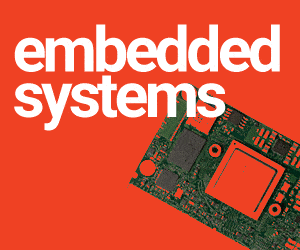What’s the selection criteria for fresh recruits?
The subject of VLSI design is quite vast. It is not fair to expect both breadth and depth from a fresh recruit. At the undergraduate level, we expect a good understanding of fundamental concepts. Our campus recruitment is based on a written test and an interview. The written test is separate for hardware and software engineers. The hardware paper has a section on aptitude, a section on digital design and a section on analogue design—we ask the students to select any one section between digital and analogue design. The software paper has two parts—an aptitude section and a section on software. Candidates who fare well in the written test are shortlisted for interview. From my experience, the interviews are mostly based on problem-solving exercises and test the conceptual understanding rather than rote learning. We don’t pay too much importance to the B.Tech project done by the student. For postgraduate students, our process is similar, except that we may go into the M.Tech project/MS thesis/Ph.D thesis. For candidates with a Ph.D background, we also ask for a presentation where we invite our experts.
How important is specialised knowledge training for aspirants?
Specialised knowledge is useful for the engineers to grow inside the company. More than the knowledge itself, the ability to learn is a more important aspect. This learning can happen from peers, from publications, from attending meetings and conferences, etc. Many of our engineers express their desire to take up higher studies and this is encouraged.
[/stextbox]
Though most of the entry-level job profiles involve code entry, verification, synthesis and system-level engineering works, the possibility of role diversification moving ahead is huge.
The roles are defined depending on the requirements of the job. Typically, a design engineer takes specifications, defines architecture, designs circuits, runs simulations, supervises layout, tapes out the chip to the foundry and evaluates the prototype once the chip comes back from the factory. The design role itself offers further classification. For example, when the marketing team tells a company what product to design for the market, the architecture team is responsible for defining the chip design. You may work in such a team as a chip architect. As an RTL designer, you may be involved in designing the functions or modules of the chip which are required to perform the well-defined tasks described by the architecture team. This design is written in a high-level logic description language such as Verilog or VHDL.
If you find interest in optimising the existing standard cell library for performance and/or power by optimising circuit design or design/layout of custom cells like adders and shifters, synthesising the logic description into a circuit description or producing a document referred to as a ‘netlist,’ you may start as a circuit designer. As a physical designer, on the other hand, your responsibilities will include placement and routing of digital blocks and chip-level integration. You have to take the netlist and perform a ‘layout’ of the chip. This layout can be used to produce ‘masks,’ which are then used to manufacture the chip on a silicon wafer.
You may get involved in a project during the design phase as a product engineer and ensure manufacturability; develop characterisation plan, assembly guidelines, quality assurance and reliability plan; and also evaluate the chip through characterisation, reliability qualification and manufacturing yield point of view (statistical data analysis). You will be responsible for production release as well as for customer returns, failure analysis and corrective actions including design changes during the post-production phase.
In a test or verification engineering role, you will have to generate and run tests on the chip to ensure proper functionality. It involves development of behavioural models, test benches and simulation environments, module integration, complete functional and regression test suites, functional coverage analysis and a reusable test infrastructure.
Applications engineers define new products from a system point of view at the customer’s end, based on the input received from marketing. They need to ensure that the chip works in the designed system or used by the customers, and complies with appropriate standards (such as Ethernet, SONET and WiFi). They will be responsible for all customer technical support, firmware development, evaluation boards, datasheets and other product documentation such as application notes, trade shows, evaluation reports, software drives and so on.






